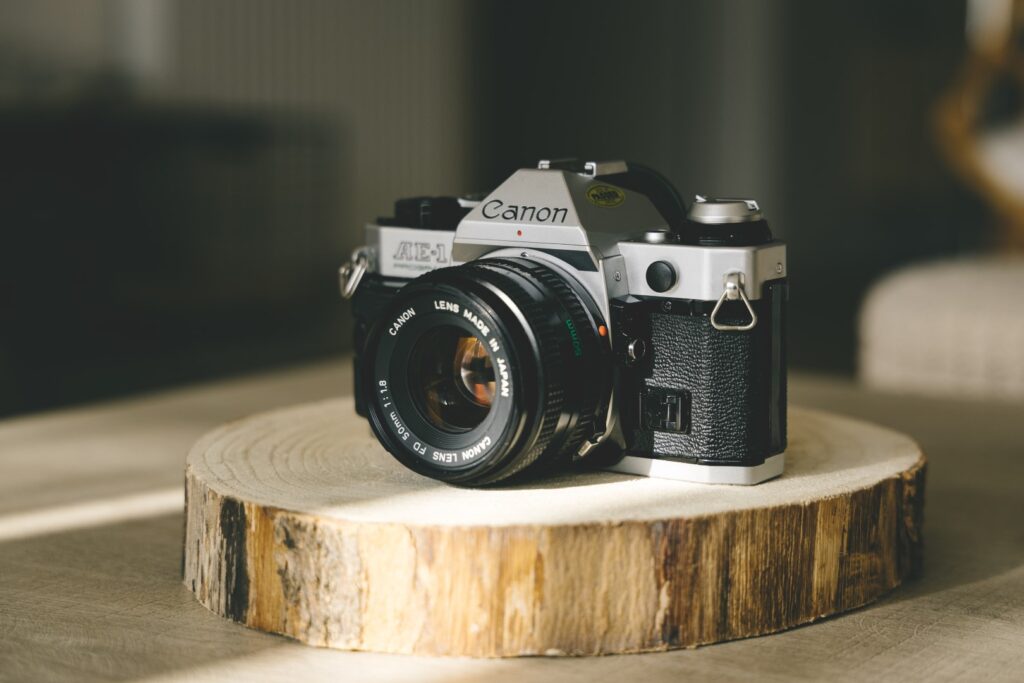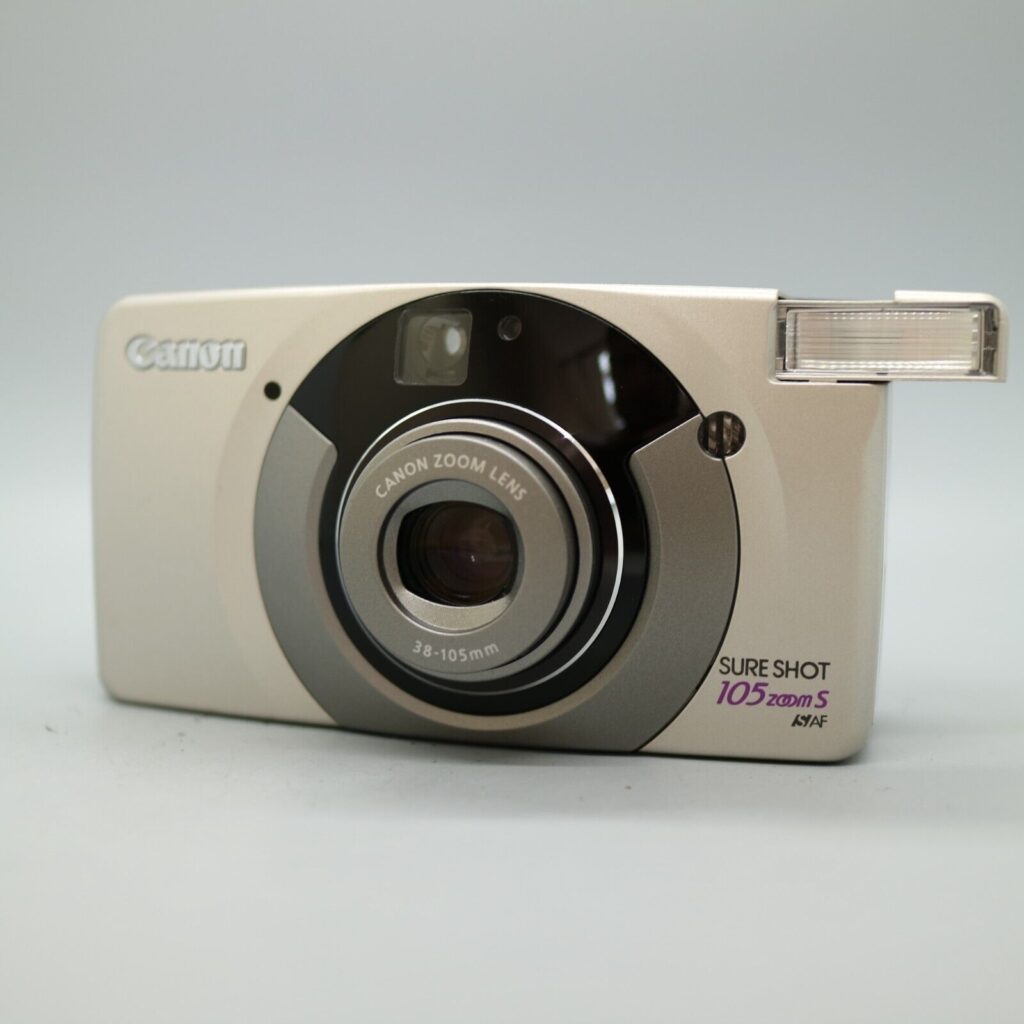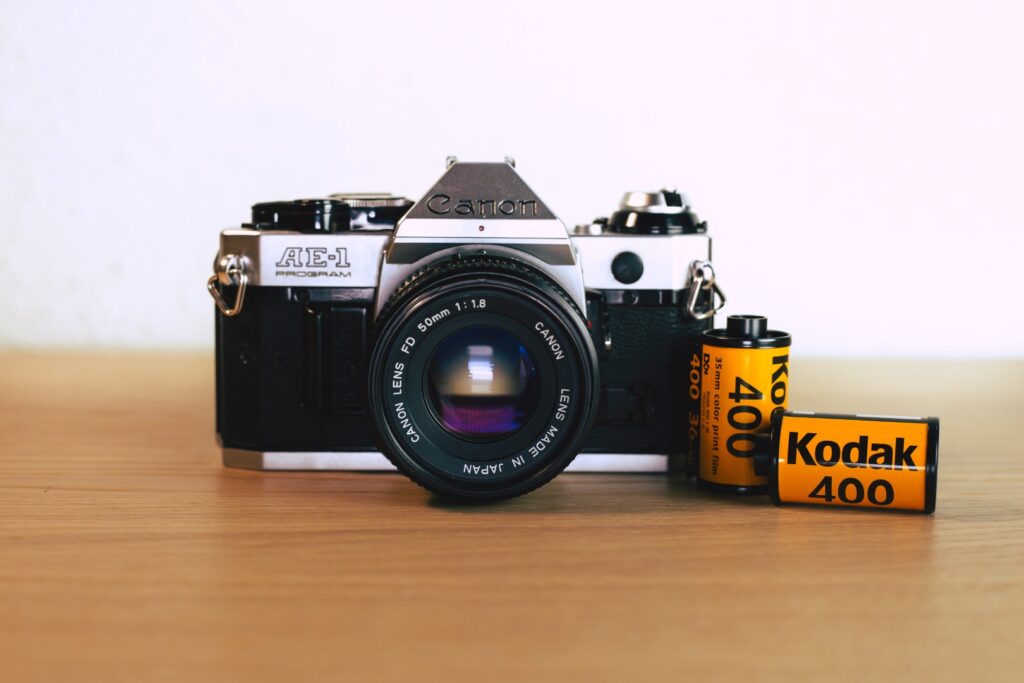Are you a proud owner of a Kodak i60 and are wondering which film to use to get the best results? You’ve landed in the right place. This comprehensive guide will equip you with a clear understanding of the ideal film for the Kodak i60, diving deep into topics like ISO, the Sunny 16 rule, and exposure latitude. We’ll also help you balance cost and quality, process and digitize your films, and explore a range of color, black and white, and experimental film options. Whether you’re new to this classic piece of technology or looking to improve your photographic skills, this guide is designed to help you make the most of your Kodak i60.
Choosing the Right Film for the Kodak i60
Determining the ideal film for the Kodak i60 camera involves a thorough understanding of the camera’s specific attributes, as these can considerably affect the end result of your photography. With the i60’s unique design and fixed features, the significance of choosing the right film cannot be overstated.
To maximize the potential of the Kodak i60, it is crucial to select a film that complements the camera’s specifications. We will delve deeper into these specifics in the upcoming section.
Getting to Know the Kodak i60’s Features
Choosing the right film for your Kodak i60 scanner hinges on understanding its distinctive specifications.
Film Size: The Kodak i60, like its M35 and M38 counterparts, utilizes 35mm film, a popular choice in the realm of analog photography. This format gives you a vast array of film types to choose from, spanning color negatives, black and white, and slide films.
Lens and Focal Length: The Kodak i60 is equipped with a 31mm fixed-focus wide-angle lens. The term “fixed focus” denotes that you can’t manually adjust the lens’s focus. Instead, it’s pre-set to a specific range, typically fine-tuned to yield sharp images from about one meter to infinity. This feature allows the Kodak i60 to be versatile, accommodating different scenarios such as landscape, street photography, and spontaneous snaps.
Shutter Speed: The Kodak i60 maintains a constant shutter speed of 1/120th of a second, identical to the M35 and M38 models. Having a “fixed” shutter speed means it remains unchanged, hence the light entering the camera remains uniform for each shot. This underscores the significance of the film’s light sensitivity (ISO) in obtaining properly exposed photographs.
Built-In Flash: The i60 model also includes an integrated flash, which is useful for capturing images in low light situations. However, operating this flash requires a AAA battery and has a recycle time of 15 seconds. While this can be an asset for night photography, its range is restricted, something to bear in mind when shooting in dimly lit settings.
The Role of ISO or Film Speed in Choosing Film for the Kodak i60
The Role of ISO or Film Speed in Choosing Film for the Kodak i60
The importance of ISO or film speed can’t be overlooked when selecting film for the Kodak i60, particularly considering its fixed shutter speed of 1/120th of a second and a 31mm f/10 fixed-focus lens. ISO defines the film’s sensitivity to light, with higher ISO numbers indicating greater sensitivity, and vice versa. Given the camera’s fixed parameters that dictate light intake, ISO becomes a crucial factor in dealing with varying lighting scenarios.
Generally, films with an ISO between 200 and 400 are recommended for the Kodak i60. A 200 ISO film strikes a good balance by lowering the risk of overexposure while ensuring accurate color and detail in brightly lit outdoor conditions. It’s an ideal choice for those wanting a versatile film capable of adjusting to changing light environments.
On the other hand, a 400 ISO film proves advantageous in low light settings, offering greater light sensitivity. It’s important to note, however, that a higher ISO can result in a more pronounced graininess in your photos. Depending on your aesthetic sensibility, this could either add a unique vintage touch or potentially detract from the overall image quality if a sharper, more detailed output is desired. Consequently, understanding your shooting environment and the visual outcome you aim for is essential when selecting the right film for the Kodak i60.
The Sunny 16 Rule and the Kodak i60
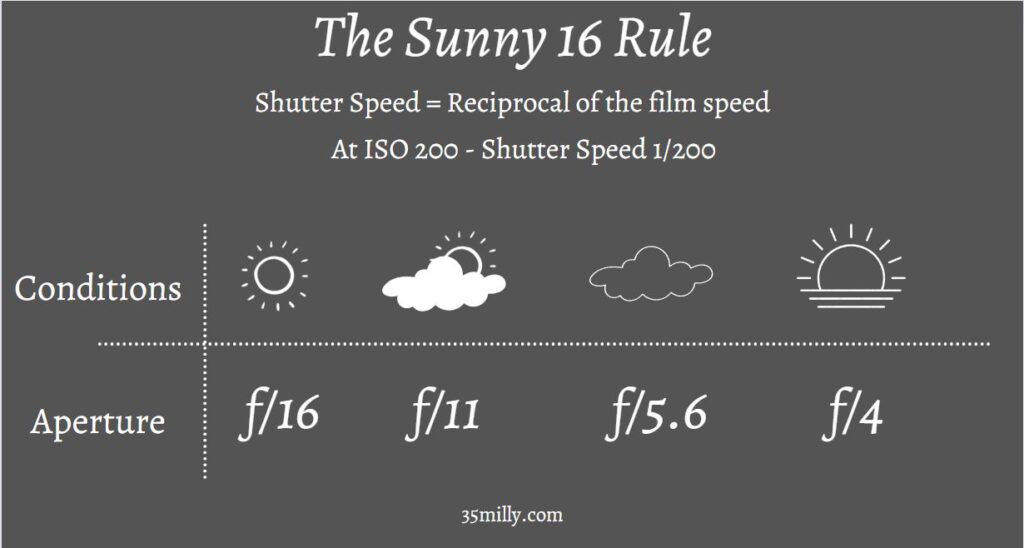
The Sunny 16 Rule is a handy guide that allows photographers to determine the correct daylight exposures without requiring a light meter. Given the fixed aperture of f/10 and shutter speed of 1/120th of a second in the Kodak i60, this rule becomes particularly applicable. In essence, the Sunny 16 Rule provides a practical reference for choosing the right ISO film based on the existing light conditions. With the Kodak i60, your ISO selection becomes the main determinant in securing appropriate exposure. Here’s a simplified guide:
| Aperture | Shutter Speed | ISO Film | Lighting Condition | Shadow Detail |
|---|---|---|---|---|
| f/10 | 1/120 | 200 | Bright sun, snow/sand | Dark with sharp edges |
| f/10 | 1/120 | 200 | Sunny, distinct shadows | Distinct |
| f/10 | 1/120 | 400 | Slightly overcast, soft shadows | Soft around edges |
| f/10 | 1/120 | 400 | Overcast, barely any shadows | Barely visible |
| f/10 | 1/120 | 800 | Heavy overcast, no shadows | No shadows |
| f/10 | 1/120 | 800 | Open shade/sunset/indoors | No shadows |
This table demonstrates how different lighting conditions and ISO film speeds interact with the fixed aperture and shutter speed of the Kodak i60. The recommended ISO film speeds and corresponding lighting conditions should act as initial reference points, with adjustments made based on your specific circumstances and experience.
In addition to the Sunny 16 Rule, a light meter app on your smartphone can be an effective aid in establishing the correct exposure. By configuring the app to f/10 and the ISO of your selected film, you can gauge how far the camera’s exposure deviates from the recommended shutter speed, thereby assisting in making informed decisions when capturing photos.
Grasping the Concept of Exposure Latitude and its Importance for the Kodak i60
Exposure latitude is the film’s ability to handle variations in exposure while still producing an adequate image. This concept is measured in ‘stops,’ where each stop signifies a doubling or halving of the light amount. For cameras like the Kodak i60 with fixed settings, a film with a broad exposure latitude can handle changes in exposure more effectively.
Films with high tolerance to overexposure are particularly beneficial, as they generally manage overexposure better than underexposure. As such, films that can endure exposure levels three stops brighter or darker while still producing quality images can be advantageous. This adaptability is especially beneficial when using the Kodak i60, particularly for those new to film photography or in situations where lighting conditions are uncertain. It’s worth noting, though, that not all films have the same exposure latitude. For instance, slide films may have a narrower exposure latitude, making them less forgiving under tricky lighting conditions. Therefore, familiarizing yourself with the exposure latitude of your chosen film can significantly enhance your experience with the Kodak i60.
Balancing Cost and Quality for the Kodak i60
With its simple design and functionality, the Kodak i60 encourages photographers to embrace spontaneity and creativity. Its compact size makes it the perfect companion for all kinds of adventures, inviting you to seize moments as they happen.
Given the user-friendly nature of this camera, it might be prudent to choose more economical or even unconventional film types. These budget-friendly options allow ample room for exploration and experimentation, eliminating the worry of wasting costly film on less-than-perfect shots. Moreover, these film types can often impart a unique aesthetic to your photos, adding to the charm of the Kodak i60.
However, if you prefer to save your high-end films for a camera with more adjustable settings, such as a fully-featured SLR, that’s entirely understandable. Remember, there are no hard-and-fast rules when it comes to selecting film for the Kodak i60. Your choice should be guided by your personal preferences, the photographic style you’re targeting, and, of course, your budget.
Processing and Digitizing for the Kodak i60
Your journey with the Kodak i60 doesn’t stop once you’ve taken your pictures; processing and digitizing your film are integral parts of the whole experience. There are two main routes you can take when processing your film: do it yourself at home, which demands specific equipment and knowledge, or entrust your film to a professional lab. Likewise, the digitization process – turning your negatives into digital files – can be performed at home with a film scanner or professionally in a lab. It’s crucial to remember that the settings used during digitization can substantially impact your photos’ final look.
If you opt to have a lab handle the processing and digitizing of your film, make sure to inquire about their pricing. Understanding the costs involved is crucial to avoid any unforeseen surprises.
Exploring Film Categories: Color, Black and White, and Slide Film for the Kodak i60
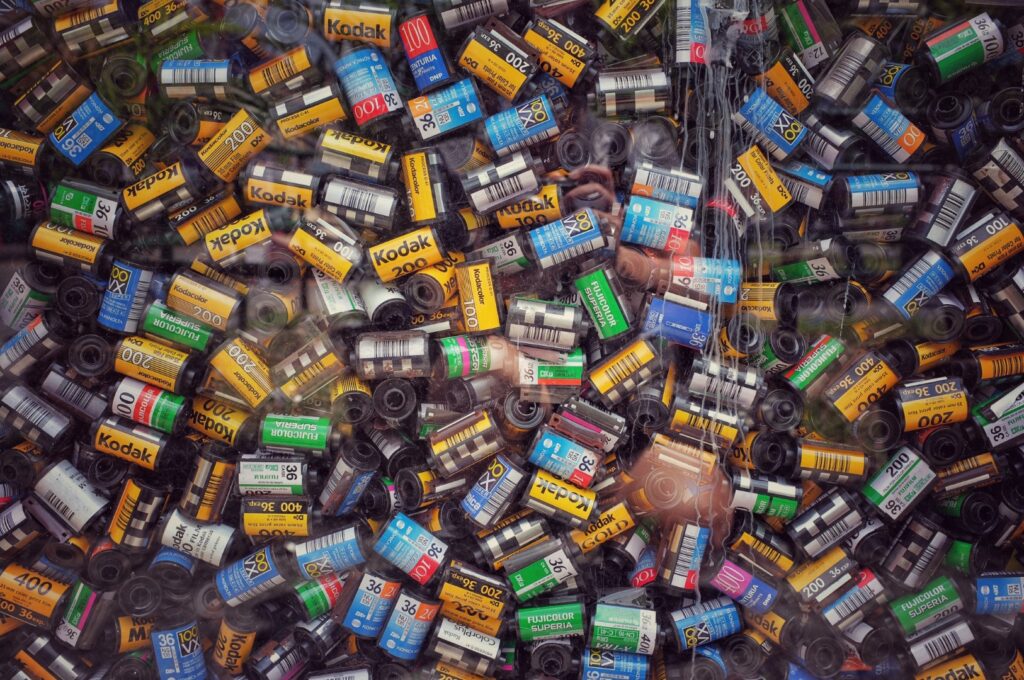
Color Negative Film: This type of film is robust and versatile, suitable for a variety of scenarios. Known for its overexposure tolerance and reasonable exposure latitude, color negative film could be an excellent choice for the Kodak i60. Films like Kodak Ultramax 400 or Agfa Vista 200 fall under this category. If you’re considering using high-end color film, remember to weigh the cost against the practicality of using it in a camera with fixed settings like the i60.
Black and White Film: If you’re captivated by monochrome imagery, black and white film creates pictures with unique depth and texture. It’s typically affordable and a solid choice for beginners keen on processing their own film, as it’s less complex than with color film. With a broad exposure latitude and a range of budget-friendly options from brands such as Ilford, Kodak, and Foma, black and white film offers a flexible option for the Kodak i60.
Slide Film: While slide film can generate remarkably vibrant and detailed photos, it might not be the best choice for the Kodak i60. Its narrow exposure latitude and elevated cost might not be ideal for a camera where you can’t manually control the aperture or shutter speed. As a result, the images produced might not fully exploit the potential of slide film, rendering it a potentially less economical option for the Kodak i60.
Top Film Choices for the Kodak i60
Color Films
Fujifilm Fujicolor 100: An excellent option for photography in bright light, Fujicolor 100 produces realistic, vibrant hues while keeping grain to a minimum. With its low ISO, this film ensures your outdoor shots will be detailed and virtually free of grain. This film has a somewhat limited exposure latitude and may be better suited for more experienced photographers who can adeptly assess light conditions. Check current prices here.

Kodak Gold 200: This user-friendly and versatile film offers a good balance between light sensitivity and grain. With a wider exposure latitude than Fujicolor 100, Kodak Gold 200 is more adaptable, perfect for unplanned photo sessions. Its ISO 200 rating pairs well with the Kodak i60’s fixed settings, providing some flexibility even in sub-optimal lighting conditions. This film is known for its fine grain, resulting in crisper images when printed or viewed at full-frame size. It’s a film that novices should definitely consider. Check current prices here.

Lomography 400 Color Negative: This film is ideal for photographers shooting in diverse or low light conditions, as its higher ISO rating offers increased flexibility. As the ISO rises, so does the grain in the images, which can add a distinctive, artistic quality, enhancing the vintage appeal of your shots. This film has a wide exposure latitude, making it more forgiving of exposure mistakes – a useful feature given the Kodak i60’s fixed settings. It’s worth mentioning that the grain may be more noticeable, but this can lend a unique, retro vibe to your photos. Check current prices here.

Black and White Films for the Kodak i60
Ilford Pan F Plus 50: This film is renowned for its extremely fine grain and exceptional resolution, producing crisp, detailed images, especially in well-lit conditions. While its lower ISO rating might seem daunting, it works well with the Kodak i60 given the right lighting conditions. This film yields images with great contrast and a wide range of tones. However, it’s worth noting that it has a relatively narrow exposure latitude, requiring accurate exposure. It’s an excellent choice for sunny days when you’re aiming to capture detailed, high-contrast black and white images. Check current prices here.

Fomapan 200 Creative: If you’re seeking a unique artistic touch, Fomapan 200 Creative could be your ideal choice. Known for its fine grain, high sharpness, and pleasing contrast levels, it also boasts a generous exposure latitude. This forgiving characteristic is a significant advantage when dealing with the Kodak i60’s fixed settings. It can produce appealing results in a wide array of lighting conditions, from bright outdoor environments to somewhat dimmer indoor settings. Its ISO 200 rating allows for reasonable flexibility, delivering relatively sharp images without excessive grain. Check current prices here.

Kentmere 400: A budget-friendly option for those concerned about cost but still desiring high-quality results. Kentmere 400, produced by Harman Technology (the same company behind Ilford films), is recognized for its fine grain and remarkable sharpness. With its ISO 400 rating, it offers versatility, making it a suitable choice for the Kodak i60 across varied lighting conditions. While it may not be as famous as Kodak Tri-X, it competes robustly in terms of image quality, offering high levels of detail and contrast. Given its affordable pricing and robust performance, it’s a top choice for photographers exploring with the Kodak i60. Check current prices here.

Experimental Film Choices for the Kodak i60
Lomography LomoChrome Purple XR 100-400: Looking for a unique touch? This film could be just what you’re after. LomoChrome Purple XR 100-400 magically transforms green tones into captivating purples, creating a surreal effect. If you’re keen to experiment and add a touch of fantasy to your images, this film is an excellent choice. Check current prices here.
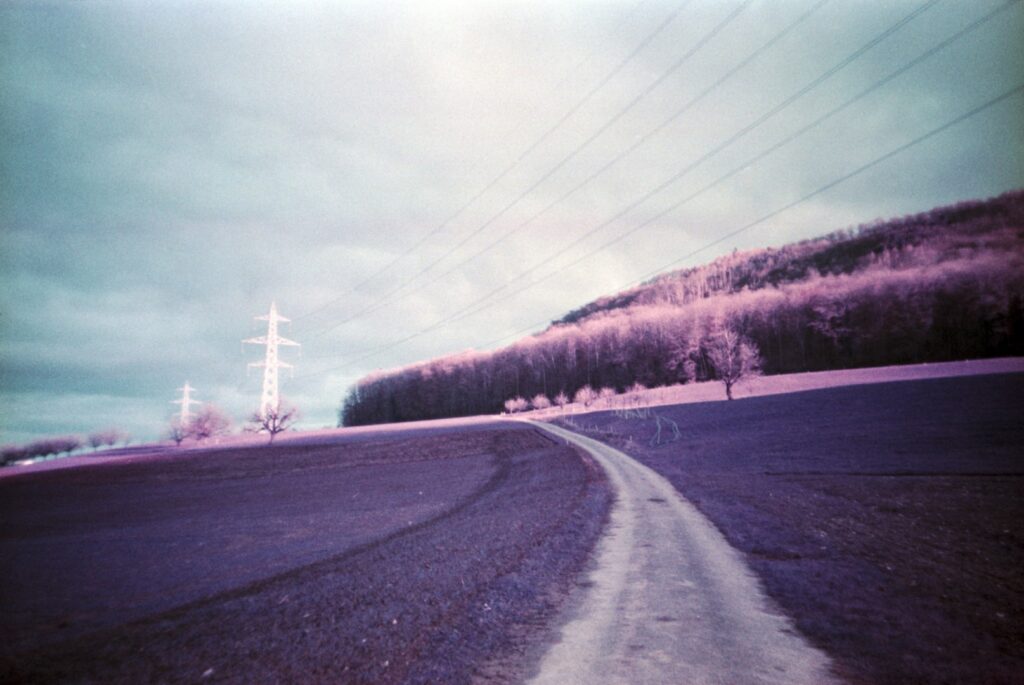
Revolog Kolor: Yearning for unique and unpredictable results? Revolog Kolor introduces random color effects and streaks to your photos, bestowing each image with a unique charm. It’s perfect for photographers who prize spontaneity and creativity in their shots. Check current prices here.

KONO! Monolit: This is far from your regular black and white film. KONO! Monolit has been pre-exposed to create high-contrast, compelling effects, adding an unexpected twist to your shots. If you’re eager to push boundaries with your Kodak i60 and create visually striking and unusual images, this film will add an additional layer of excitement to your photographic journey. Check current prices here.

Choosing the Ideal Film: Where to Buy
There are numerous sources to consider when buying film for your Kodak i60:
Amazon: With its wide assortment of film stocks from various manufacturers, Amazon serves as an excellent starting point for your film shopping excursion. It offers competitive pricing, useful customer reviews, and the convenience of home delivery. From the comfort of your own space, you can easily browse and select the most suitable film for your camera.
eBay: If you’re on the hunt for uncommon or discontinued film stocks, eBay could be your ideal marketplace. It’s also a good place to snag deals on film. However, it’s important to purchase from trustworthy sellers to avoid any potential issues with film quality.
Specialist Online Stores: Websites dedicated to film photography like The Film Photography Project, Freestyle Photographic Supplies, and Analogue Wonderland, offer a comprehensive variety of film types. These platforms not only provide a wide array of options, including more unique and experimental films, but also offer valuable insights into film photography, enhancing your photography journey.
Local Photography Stores: Don’t forget about your local photography shops and specialized camera stores. While their selection may not be as extensive as online platforms, these stores provide the benefit of direct advice from experienced professionals. Their knowledgeable staff can guide you in selecting the right film for your Kodak i60.
Regardless of where you source your film, it’s crucial to ensure it has been stored correctly—in a cool, dry environment—and to always verify its expiry date. Using film before it expires will optimize your chances of obtaining the best possible results.
Frequently Asked Questions About Using Film in the Kodak i60
Can I use black and white film in my Kodak i60?
Yes, you can use black and white film in your Kodak i60. This film type is known for delivering images with rich depth and texture, making it a fantastic choice for creating distinctive monochrome images.
Is it feasible to use slide film with the Kodak i60?
While it’s technically feasible to use slide film with the Kodak i60, this film type generally has a narrower exposure latitude and higher cost. It might be less optimal for a camera with fixed settings, which can’t manually adjust aperture or shutter speed.
What is the ideal ISO for the Kodak i60?
The ideal ISO for the Kodak i60 depends on the lighting conditions. Generally, lower ISOs (like 100 or 200) are great for brightly lit or outdoor conditions, while higher ISOs (400 or 800) perform well in lower light or indoor settings.
Is home development possible for film from the Kodak i60?
Absolutely! Home development is certainly possible and can be a rewarding aspect of the film photography process. It does require some additional equipment and learning, but many black and white films are particularly well-suited to home development.
What occurs if I use expired film in the Kodak i60?
Using expired film can lead to unpredictable and often artistic effects, such as changes in color, contrast, and grain. However, the quality and degree of these effects can be variable, and some films may not produce usable images at all.
How can I guarantee optimal image quality with my Kodak i60?
Ensuring optimal image quality involves several factors: using high-quality film, ensuring the film is within its use-by date and has been properly stored, correctly loading the film into the camera, and using the appropriate film type for your lighting conditions.
How does the Kodak i60 perform in low-light conditions?
Performance in low-light conditions will largely depend on the film you’re using. Films with higher ISOs are more sensitive to light and, therefore, better suited to darker conditions.
Can I adjust the exposure settings on the Kodak i60?
The Kodak i60 comes with fixed exposure settings, so you can’t manually adjust the shutter speed or aperture. This simplicity makes it a good choice for beginners or those looking for a point-and-shoot experience.
Does the Kodak i60 have any specific maintenance requirements?
The Kodak i60, like any camera, should be kept clean and dry to ensure its longevity. It’s also a good idea to store the camera in a cool, dust-free environment when not in use.


